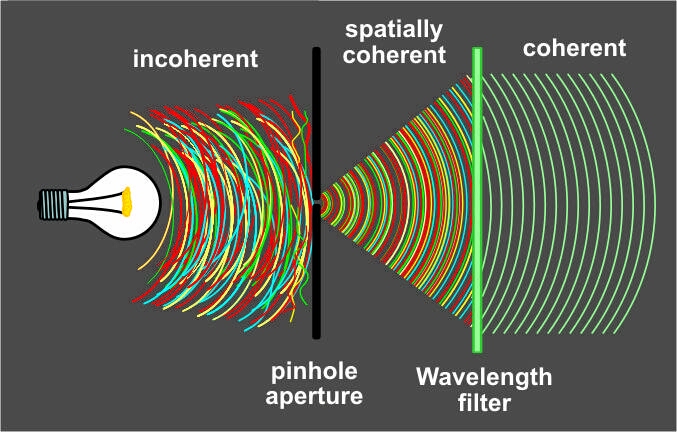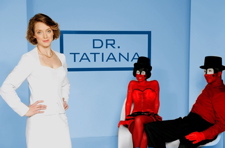Serendip is an independent site partnering with faculty at multiple colleges and universities around the world. Happy exploring!
Notes Towards Week 6 (Oct. 4): "Form Follows Function" --Part II with Anne

Mike Manoukian, one in photographic series entitled Form and Function
I. Kaye: coursekeeping
II. Anne: Writing Science
Your second paper will be due on Sun, Oct. 30, and --aiming for a specific audience
(of middle or high school students? readers of the Bi-College News, the Philadelphia
Inquirer, a sex ed blog site??)-- will explain what's important about some dimension
of the diversity of gender or sexuality. So: I want us to prepare for this task, by talking
tonight about "science writing."
When I asked you all to "let your bodies speak" in our barometer last week,
you were anxious, before locating yourself, to have definitions --of "mad,"
or "passing," or "dialogue," or whatever....though not having shared definitions
is of course central to the game: it highlights the different presumptions operating
when we (think we are) communicating; the game also makes visible the
different directions in which we are moving, when we all seem to be sitting still!
It is one of Margaret Price's claims that "attention
to discourse is foremost an activist goal" (p. 29)
--that the words we use act/affect our acting/the uptake
of our acting in the world; the NYTimes article about
"the freedom to choose our pronouns," which I put up
in our web forum, suggests one possible application;
a number of your postings suggested others.
I want to go on with this train of thought: on the difference that form makes.
* This is what literary scholars do: we look @ the aesthetics of texts, their shapes.
* As Kaye said last week, this valuing affects our practice in presentations,
and distinguishes scientists from humanists: when "they" present their work,
they have visuals, and speak w/out a text (to show that they really understand
what they're saying/doing!); while "we" carefully, carefully craft our texts,
and read from them (this can/often is terrible pedagogically!). Kaye and I come
to Serendip from different directions; using it in class is making her more
attached to the text, and me less so (and more attached to visuals....).
I spoke last week about "sense and sensibility" (what something means/how it feels);
this seems to me roughly parallel to "function and form," though the origin of the
cliche describing the relation between those terms actually comes from the field of architecture:
It is the pervading law of all things organic and inorganic,
Of all things physical and metaphysical,
Of all things human and all things super-human,
Of all true manifestations of the head,
Of the heart, of the soul,
That the life is recognizable in its expression,
That form ever follows function. This is the law.
(Louis Sullivan, "The Tall Office Building Artistically Considered,"
Lippincott's Magazine, March 1896).
It was 'form follows function', as opposed to 'form follows precedent':
shaking off the old styles gave the Modernists more freedom and latitude
in design (designers today may have thrown off the cliche altogether;
consider digital devices, such as the iPod Shuffle, as subtle jokes on "form follows....")
In a bit, Kaye will help us think about
how, in biology, "function follows form."
I want us to focus first on the ways in which
"form follows function" in Science Writing.
We have brought w/ us this evening our experiences
in encountering five different KINDS of writing-and-viewing:
a PBS special, some popular science writing, an academic book,
and a textbook -- plus your own/what you created this weekend.
Let's start there:
write for a few minutes about the KIND of writing
you put up on Serendip on Sunday evening:
How would you characterize it? What are its qualities?
What does your reader know about its author?
How clearly located is she?
What information is revealed about her?
(consider: your username, your point of view, pronoun choice,
contextual clues--does it indicate this is part of class conversation?)
Who is the audience for your paper? (How clearly identified are they?--
again: what signals/gestures/context/presumptions??)
What is the aim of your paper? Is it to advance an argument, or....?
How clearly articulated is that aim?
How would you characterize its tone? Its attitude --
towards its topic, its audience and its author?
Make this not an evaluation, but a description
of the SORT of project you were engaged in.
Call out/speak/read some of what you wrote....
Two other descriptions of academic writing.
The first one (which should be familiar to you!) is by Margaret Price:
"the most important common topoi of academe ... include rationality, criticality, presence,
participation, resistance, productivity, collegiality, security, coherence, truth, independence
.... 'coherence' is one of the most-often emphasized features of a thesis-driven
academic argument [and is thought to] indicate a stronger mind" (pp. 5-6).
The second description of academic writing comes from an April 2001 Harper's Magazine
review of six books about language usage by David Foster Wallace, called "Tense Present:
Democacy, English, and the Wars Over Usage":
Standard Written English is ... the dialect of the American elite ... perpetuated as a "Standard"
by same ... it is the shibboleth of the Establishment and an instrument of political power and class
division and racial discrimination and all manner of social inequity ... perceived as the dialect of
education and intelligence and power and prestige .... Academic English [is] ... a grotesque
debasement of SWE ... a scholar's vanity/insecurity leads him to write primarily to communicate
and reinforce his own status as an Intellectual ... his English is deformed by pleonasm and
pretentious diction ... and by opaque abstraction.
Might/how might writing on-line intervene in these practices?
(Consider the comment on rachelr's posting: "Gay Marriage is Wrong")
Did posting your paper on-line alter the way you write in any way?
Call out some more of the qualities of your writing.....
Let's break into small groups now (count off in 6's) to look together @
the range of forms of writing that Kaye selected for us to read for tonight.
This will be a conversation about "genre," about the ways
that different "literary kinds" signal to us how to read them.
We'll begin w/ the "most academic":
Chapter 5 from John Alcott's textbook on Animal Behavior.
Tell one another: how did you read this?
What reading instructions are built into the text itself?
(Kaye's instructions to us: "first look at the figures and read their captions, then return to the
text, and refer to figures; don't get hung up on experimental techniques that you don't understand).
Answer the same questions, about Alcott's text, that you answered about your own:
How would you characterize it? What are its qualities?
Who is its author? (How clearly does he locate himself?)
Who is his audience? (How clearly does he identify us?)
What is his aim? (How clearly does he articulate that?)
How is his argument supported? (How does he use evidence?)
How would you characterize his tone? His attitude--
towards his topic, his audience and himself, as author?
Do we trust the stories Alcott is telling us? (Why, why not?)
Joan Roughgarden takes a very different tack (one the
Guardian reviewer could only make sense of by dismissing it as
a joke: "I suspect this book - which bizarrely hybridises
science, religion and identity politics - of being a spoof."
So, apply the same questions to her text:
How would you characterize it? What are its qualities?
Who is its author? (How clearly does she locate herself?)
Who is her audience? (How clearly does he identify us?)
What is her aim? (How clearly does she articulate that?)
How is her argument supported? (How does she use evidence?)
How would you characterize her tone? Her attitude--
towards her topic, her audience and herself, as author?
Do we trust the stories Roughgarden is telling us? (Why, why not?)
*Riki Wichins to Shlomo:
"don't ever assume anything you read is value-free holy writ."
Shlomo to Riki Wichins:
"I had forgotten to really take my own perspective into account....
It's a valuable thing to remember .... to look for my own prejudices."
* Margaret Price, citing Donna Haraway on the 'god-trick,' and
Thomas Nagel on the 'view from nowhere,' said that academic discourse
"claims a gaze that comes from nowhere and everywhere all at once,
omniscient and unlocatable, and therefore shielded from any countergaze" (p. 35).
The Foucaultian dimensions of this:
discourse/power that is everywhere and nowhere...
William Blake, "The Ancient of Days," 1794
Close your eyes. You are God. How does the world look to you?
(Where are you located, in relation to it?) What language might
you use, to describe what you see? How do you use evidence,
to develop your story?) How would you characterize your tone?
Your attitude--towards your topic, your audience and yourself, as author?

William Blake, “Isaac Newton,” 1795
Now: you are a science writer. How does the world look to you?
(Where are you located, in relation to it?) What language might
you use, to describe what you see? How do you use evidence,
to "back up" your story?) How would you characterize your tone?
Your attitude--towards your topic, your audience and yourself, as author?
(If we have time--doubtful!), we'll repeat this exercise w/
"Dr. Tatiana's Sex Advice" and the Nature videos:
identifying these "genre" by virtue of their "attitude"--
towards their topic, their audience, their creators.
How "authoritative" are they, how "dialogic,"
how assertive, how open to revision?
How do you view such texts?
(Post on-line about this over break.)
How do you want to write one?
(In a few weeks you'll get a chance to do this, too, in paper #2).
Another of Mike Manoukian's photographs of Form and Function
III. Break
IV. Kaye
-------------------------------------------------------
Anne's Reading Notes from Roughgarden
How familiar is it to the biologists among us?
How familiar to the rest of us?
p. 7: "I've coined the term 'genial gene' .... [to] emphasize that genes must cooperate lest the common body they inhabit sink like like a lifeboat filed with squabbling sailors."
p. 14: "the most basic question faced by evolutionary biology is whether variation within a species is good in its right or whether it is simply a collection of impurities ...."
p. 23: "'Men' and 'women' are social categories. We have the freedom to decide who counts as a man who counts as a woman. The criteria change....
....the biological criteria for male and female don't coincide 100 percent with present-day social criteria for man and woman .... using biological categories as though they were social categories is a mistake called 'essentialism' .... social categories can't be made to coincide with biological categories except by fiat."
pp. 26-27: "Among the species that reproduce sexually, gamete size obeys a near-universal binary between very small (sperm) and large (egg) .... Beyond these two generealizations, the generalizing stops and diversity begins! ....
The biggest error of biology today is uncritically assuming that the gamete size binary implies a corresponding binary in body type, behavior, and life history. No binary governs the whole individuals who make gametes, who bring them to one another for fertilization, and who interact with one another to survive in a native social context.... Gender, unlike gamete size, is not limited to two....Gender is the appearance, behavior, and life history of a sexed body ....gender is appearance plus action ...."
* its critique of the limits of category-making, especially academic categories:
p. 9: "our species manifests the same range of variation across cultures and through time, but shows great variation in how we package people into social categories"
p. 3: "the book's main message [is] an indictment of academia for suppressing and denying diversity...all our academic disciplines should go back to school, take refresher courses in their own primary data .... Western culture discriminates against diversity. Each discipline finds its own justification for discrimination."
* its placing on the table the relation between fact and value
p. 4: "I do argue that because gender and sexuality variation occur in animals, this variation is also good for humans. I do not advocate any version of this fallacy ["Natural equals good"] that confuses fact with value. I believe the goodness of a natural trait is the province of ethical reasoning, not science.
*its recognition that you need both to identify writers' agendas
(including hers!) and distinguish them from your own
p. 10: "I find that refuting sexual selection theory imbues female choice with responsibility for decision about power and family ...and empowers varied expressions of gender and sexuality."
p. 9: "You, my readers, are a jury of friends and neighbors, and you will make up your own mind. Please consider that everyone writing on these topics is writing from a particular perspective and with a vested interest....
p. 31: my guess is that hermaphrodism is more common in the world than species who maintain separate sexes in separate bodies.... The separate-sex/separate-body state is often viewed as "normal".... Alternatively, hermaphrodism may be viewed as the original norm, prompting us to ask what there is in mobile organism in the terrestrial environment that favors separate sexes in separate bodies.
p. 396: "what won't work is stuffing our species into two small categories of gender and sexuality.... Social scientists... think diversity results from society producing difference among people who are biologically the same. I don't agree. The biology I know tells of endless variation, not of a few universals. This endless biological variation is always poking through social categories, spilling over the borders, fudging the edges."


